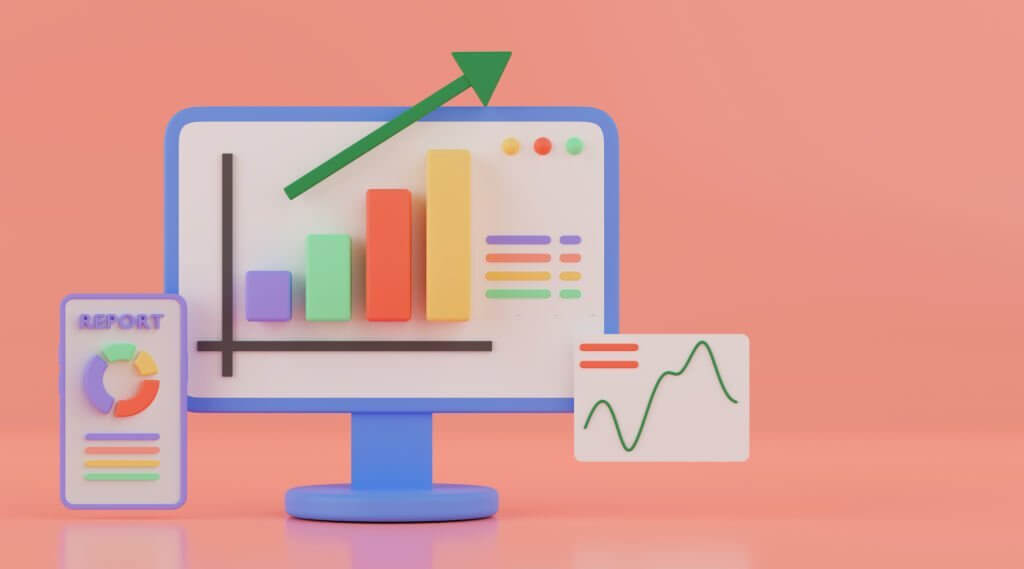Table of Contents
Black Friday and Cyber Monday (BFCM) are the two most important holidays to increase your sales exponentially. Most businesses will set up their websites or their stores to prepare for these big days.
However, your Black Friday inventory should always be the priority. After all, it will mostly determine how much money you’re going to make on these biggest shopping days of the year.
So, are you ready to make a profit in this special season? Keep reading for a basic guide and some tips to get you through these busy days.
How to stock up for Black Friday and Cyber Monday?
Stockouts are usually inevitable during BFCM. Merchants may run into this trouble when the sales are beyond their expectations. That’s why you must stock up on sufficient products to prevent stockouts.
Here is a 4-step guide to ensure you have a sufficient Black Friday inventory to sell the items you want.
Step 1: Review your inventory performance reports
Business owners can experience a significant rise in sales during BFCM, but keeping up with the demand can be an issue. Therefore, doing research and having an inventory management plan can help you reduce inventory risk.
First, you can use your historical inventory to predict the upcoming Black Friday inventory or BFCM inventory.

Historical inventory helps you predict your Black Friday inventory
However, what is the historical inventory?
It is the record showing your inventory value of a specific date or date range.
For a historical inventory, you need to look at different data points from the past to estimate the rate at which your inventory changes over time. Then, you apply that rate to your most recent inventory data to predict how your Black Friday inventory will change in the future.
For example, to estimate the inventory for BFCM 2023, you can use the data from 2022, 2021, and 2020. However, you should be cautious about calculating the inventory in 2020. This is the period of the outbreak of COVID-19, so you need to think about how you can adjust your inventory planning and strategy to account for potential outcomes.
How does historical inventory help you predict Black Friday inventory? It helps you find your best-performing items and eliminate underperformers. It also gives you the opportunity to adjust current stock items based on customer demands.
Another important tip is that you should study your product roster. You can do this by dividing your inventory into categories to see their performance.

Dividing your Black Friday inventory into categories to see their performance
What are the benefits of studying your product roster? This will let you know what products to fulfill first to prevent stockouts. Moreover, it will minimize risks in the event of delays in shipping.
Step 2: Prepare your marketing strategy
Marketing and inventory must go together. Once you have the data on your inventory performance, you can tie your forecasts to your marketing strategy.

Preparing the marketing strategy based on the data on your inventory performance
Remember that if you don’t promote your products, you may not entice enough customers to purchase your stocks. On the other hand, running lots of marketing campaigns without having enough stocks to back them up can lead to disappointed Black Friday customers.
Step 3: Analyze and forecast sales performance
The next step to stock up your Black Friday inventory is to analyze your previous sales.
Analyzing your previous sales allows you to see which products have been doing well. It also helps you discover products that have sales potential based on trends.
In order to forecast sales, you need your historical sales data and other variables, such as:
- Seasonal demands: You will identify and manage the peaks and troughs in demand that some items experience at certain times of the year.
- Trends: You’ll look at past sales or market growth, determine possible trends from that data and use the information to predict what could happen in the future.

Trends can help you forecast sales
- Marketing initiatives: A well-defined marketing strategy can lead to an increase in sales. In short, this directly impacts the revenue generated as the more you reach out to people, the more they reach out to your business or brand.
- Global or regional changes: Global or regional changes will undoubtedly affect your sales. For example, when temperatures spike or drop, consumers will change their buying habits, and preparing your business for whatever may be coming is essential.
- Current industry conditions: Industry conditions can affect your sales performance. For instance, when your industry is facing a lack of resources, the volume of products may be lower than expected. Therefore, the prices will go up, and people will be less likely to purchase your items; as a result, your sales will decline.
In addition, if you have multiple revenue streams, such as an e-commerce website or some brick-and-mortar stores, you may want to explore these in detail for better sales projections.

You should only forecast your sales after researching the data
One thing you need to remember is that you should NEVER guess your sales without taking any analytical approach.
If the sales are miscalculated, there’s a high risk that you won’t have enough stock to meet demand, or even worse, you will order too many items and have to sit on them, tying up a lot of cash.
Step 4: Make sure your orders and suppliers are ready
The final step in ensuring you have enough Black Friday inventory is to make sure your suppliers are up to the task.
In this step, you already know how much stock you need based on your sales data, inventory performance, and market research. So during this step, you have to align your inventory with your forecasted demand.
All you have to do is to keep an open dialogue with suppliers about your needs as soon as possible. You need to create a purchase order, summing up all the items relevant to a specific supplier. Furthermore, you can repeat this process for each supplier, purchased schedule, and channel.

You should always keep an open dialogue with our suppliers
Finally, you should manage your Black Friday inventory well by not restocking too soon or too late. If you place orders more than necessary, you’ll hold too much stock you don’t need. Hence, this leads to overstock issues.
On the other hand, if you don’t restock on time, you’ll watch your sales drop as you don’t have enough products to sell during this season.
More tips to prevent stockouts during this holiday season
If you need to stock up your inventory on Black Friday and Cyber Monday, you can check out these two tips to prepare for this shopping season.
Have a contingency plan
Occasionally, business owners can hardly predict Black Friday inventory accurately, yet the inventory can affect your business’ sales. So, having a backup strategy is a good idea.
Here are your options:
- Don’t rely on a single supplier: You should look for other companies you can partner with and build a relationship with them.
- Rent a new warehouse: A new warehouse allows you to have more space to stock up your inventory.

Having a Plan B allows you to better prepare for big days
Proactively take action
COVID-19 has undoubtedly affected the 2021 Black Friday sales, and few businesses had to get nifty to avoid it. If you are in any difficult situation, you should immediately take action after careful consideration:
- Improve forecasting capabilities: It’s essential to accurately anticipate customer demand as demand forecasting can help keep inventory levels at an ideal level, thereby preventing stockouts, shortages, and overstocks.
- Set reorder points: A reorder point tells you when to order more inventory to avoid running out of stock. Therefore, calculating ideal reorder points for each product can help you manage your inventory controls and ultimately minimize stockout events.
- Keep safety stock: Keeping extra products in inventory as a safety measure is an effective way to prevent stockouts. However, having too much safety stock becomes costly overstock. That’s why you need to use this formula to calculate ideal safety stock levels carefully.
- Recommend similar products: If your store is out-of-stock, you can suggest similar products to shoppers that really match their needs seamlessly.
Final words about Black Friday inventory
Now, you can start managing your Black Friday inventory more effectively. Therefore, you can choose the products, schedule their start dates and work out their prices based on how deeply you look into last year’s sales and inventory data.
Black Friday and Cyber Monday are opportunities to make more sales. Although no Black Friday is hassle-free, at least your inventory management and planning will be up to scratch for the big day.



